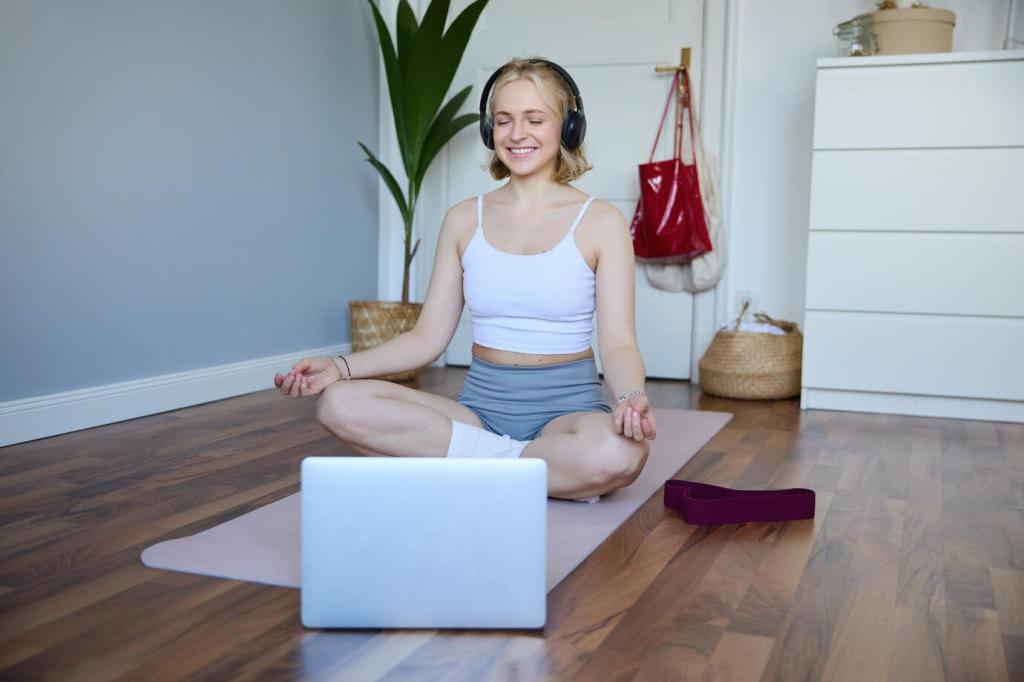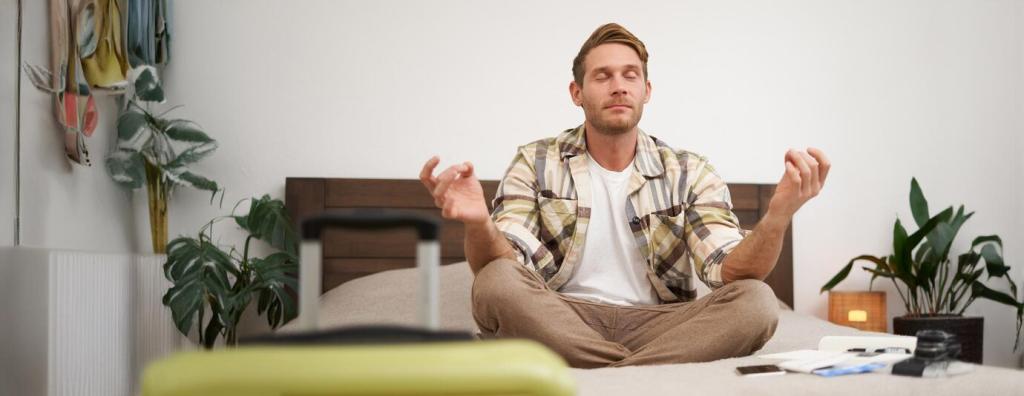Creating a Healthy Workspace for Mental Wellness
Theme: Creating a Healthy Workspace for Mental Wellness. Welcome to a calmer, kinder way of working. Here we transform desks into sanctuaries, simple habits into anchors, and daily routines into quiet power. Take a breath—your workspace can hold you, not drain you.
Align your body, unburden your thoughts
Set chair height so your feet rest flat, knees level with hips, and elbows at roughly ninety degrees. Raise your screen to eye level and keep the keyboard close. That gentle alignment reduces micro-tension that steals focus and quietly amplifies stress.
Move often, think clearer
Instead of marathon sits, build movement into the day. Use a timer for fifty minutes of focus, then stand, stretch, and roll your shoulders. Those micro-pauses reset posture, improve circulation, and give your brain a refreshing breath of cognitive space.
A small story of relief
Maya placed a paperback under her monitor before buying a stand. The headache that haunted her afternoons softened, then disappeared. One low-tech tweak can be the hinge between restless strain and a steady, mentally spacious day. What’s your simple fix?
Light, Air, and the Mood of Your Room
Place your desk sideways to a window to reduce glare and invite soft daylight. Balance with a warm task lamp in early mornings. Natural light helps regulate your body clock, easing stress and making deep work feel more naturally attainable.

Quiet the Noise, Sharpen the Focus
Identify your daily noise hotspots and set clear buffers. Use noise-canceling headphones for deep work blocks and agree on quiet hours with roommates. Boundaries are not barriers; they are invitations for your mind to trust the next hour of focus.
Experiment with gentle rain, low café murmur, or unobtrusive ambient music. Choose sounds without lyrics during complex tasks to reduce cognitive interference. Let the background be a steady river that carries you, instead of a storm that spins you around.
When Jon’s upstairs neighbor started renovations, he built a rescue kit: earplugs, white-noise app, and a templated message requesting quiet windows. The noise continued, but his stress didn’t. Preparation turns sound spikes into manageable ripples instead of tidal waves.
Rituals and Boundaries That Protect Your Headspace
Begin with a gentle anchor
Start with a two-minute ritual: brew tea, light a candle, or write a three-line intention. This tiny ceremony tells your brain it is safe to focus. Consistency matters more than perfection; show up, and your mind will learn the cue.
End with a clean handoff to future you
Finish by clearing the desk, listing tomorrow’s three priorities, and shutting down intentionally. That simple closure reduces rumination after hours and frees your evening. When tomorrow arrives, future you steps into clarity instead of sorting yesterday’s tangled thoughts.
Visual boundaries in small spaces
If your desk lives in a living room, use a folding screen, a desk mat, or a dedicated lamp to signal work mode. When the lamp goes off or the mat is stored, your brain registers off-duty time and finally exhales.
Tame notifications with purpose
Audit alerts and keep only essentials. Batch messages into set check-in times, and use do-not-disturb during deep work. Your brain deserves stretches of uninterrupted thought. Permission granted to design a quieter digital doorbell that rings only when it truly matters.
One task, one window
Try a tab diet: close everything unrelated to the current task and activate a focus mode. Pair with the 20-20-20 eye rule to reduce strain. Clarity on screen creates calm in mind, and calm protects the quality of your work.
Micro-pauses that reset your nervous system
Between tasks, take thirty seconds to look away, unclench your jaw, and drop your shoulders. These tiny resets lower stress and prevent decision fatigue from building. A softer workday is not slower—it is smarter about energy recovery.

Personal Style and Biophilia That Soothe
Choose soft neutrals for serenity, gentle greens for restoration, or muted blues for clarity. Keep a restrained palette with one joyful accent. The point is not perfection; it is creating a visual environment that whispers, not shouts, while you work.

